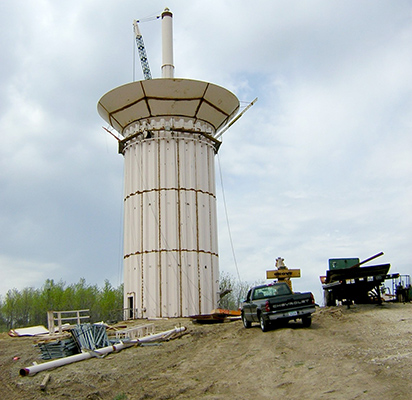 As the situation surrounding the pandemic continues as well as ongoing derecho recovery efforts, Iowa government officials may find it difficult balance both the needs of COVID-19 and the management of normal operations and maintenance in their buildings. Regulated materials and programs may be delayed as more resources are dedicated to safety, cleaning and disinfection procedures.
As the situation surrounding the pandemic continues as well as ongoing derecho recovery efforts, Iowa government officials may find it difficult balance both the needs of COVID-19 and the management of normal operations and maintenance in their buildings. Regulated materials and programs may be delayed as more resources are dedicated to safety, cleaning and disinfection procedures.
Asbestos and lead-based paint are the most common regulated environmental hazards that municipalities must manage. Various federal and state agencies regulate asbestos and lead-based paint through testing and reporting. Remembering when and what to test and keeping track of paperwork can be daunting.
Asbestos and LBP
Asbestos is a naturally occurring mineral that is used in building materials. Older buildings tend to have more issues regarding asbestos due to natural deterioration and normal wear and tear. However, new buildings may also have asbestos-containing materials which is why an asbestos survey is required for every renovation or demolition project.
Lead-based paint is a concern in buildings built before 1978. Lead-based paint causes developmental concerns in young children. The Iowa Department of Public Health requires that lead-based paint be tested and managed in rooms and common areas where children 6 years or younger are present such as daycares and after-school programs. Management includes initial testing and regular maintenance. If paint is disturbed during construction activities, lead dust sampling is required to document the space is safe for reoccupation.
As a best practice, asbestos and lead-based paint testing should be conducted for planned demolitions and renovations in all structures. The Occupational Safety and Health Administration (OSHA) requires that only licensed abatement contractors remove asbestos and lead-based paint, and contractors working around these hazards must be aware and use safe work practices.
The Benefits of an Environmental Professional
Asbestos and lead-based paint are just two of the many hazardous materials government officials may encounter on a regular basis. Hiring an environmental professional to assist in managing regulated environmental hazards can help to reduce liability risks and protect the public.
Environmental professionals can assist with asbestos and lead-based testing for planned demolitions or renovations to government buildings, dilapidated/nuisance homes, storm-damaged buildings, planned structure burns, utility upgrades, water towers, and bridges. In addition to testing, environmental professionals can design abatement projects, recommend reputable contractors for competitive quotes, and provide oversight throughout the project.
Shive-Hattery’s environmental professionals work in collaboration with an in-house team of architects and engineers to pull in the expertise to meet your needs.

 As the situation surrounding the pandemic continues as well as ongoing derecho recovery efforts, Iowa government officials may find it difficult balance both the needs of COVID-19 and the management of normal operations and maintenance in their buildings. Regulated materials and programs may be delayed as more resources are dedicated to safety, cleaning and disinfection procedures.
As the situation surrounding the pandemic continues as well as ongoing derecho recovery efforts, Iowa government officials may find it difficult balance both the needs of COVID-19 and the management of normal operations and maintenance in their buildings. Regulated materials and programs may be delayed as more resources are dedicated to safety, cleaning and disinfection procedures.